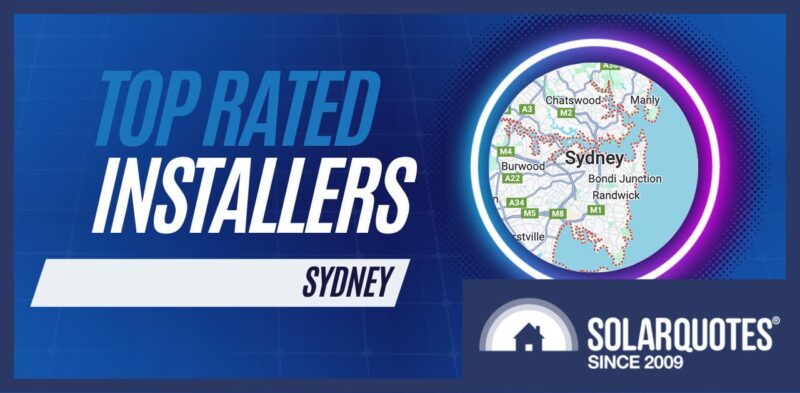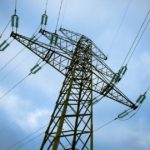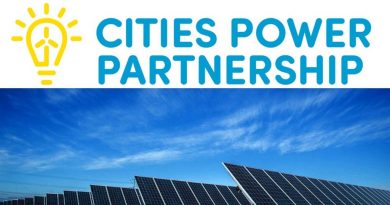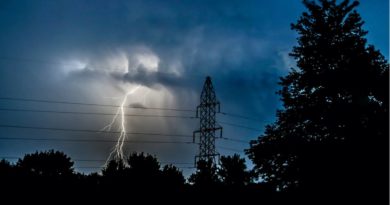Electricity Tariff Comparison: A Simple Tool For A Complex World
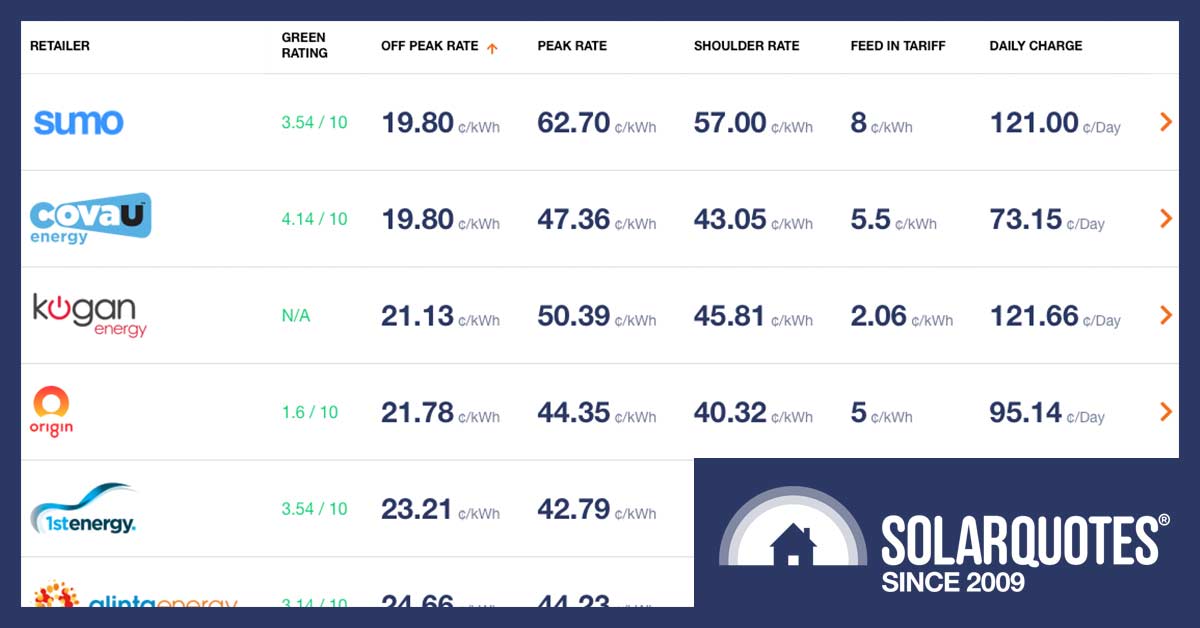
Choosing the most suitable electricity tariff after installing solar panels or batteries can make a huge difference to your future power bills.
Unfortunately, electricity tariffs are getting more complex.
In a perfect consumer-friendly world, all electricity plans would be one per-kWh usage rate and one per-kWh feed-in tariff (FiT) rate; and nothing else.
Comparing electricity plans would be much easier for everyone.
But in a renewables-heavy grid, it makes sense to vary the per-kWh charge based on the time of day. Incentivising people to use electricity outside of the morning and evening peaks accelerates the decarbonisation of the grid.
So, Australian electricity consumers are increasingly being pushed onto time-of-use (ToU) plans.
I’m cool with that. But what I’m not cool with is all the other complications keeping electricity tariffs really hard to compare:
- membership fees
- fixed daily charges
- benefit periods
- direct debit discounts
- bundling discounts
- paperless billing discounts
- pay on-time discounts
- account establishment fees
- late payment fees
- disconnection fees
- reconnection fees
- lock-in contracts with exit fees
- demand charges
If you’re a solar owner, you also need to check if the feed-in tariff:
- has a maximum system size
- has a maximum export threshold
- pays for all the kWh or only the first x per day or per month
If you are a battery owner, you also have:
- a smorgasbord of VPPs (Virtual Power Plants) to consider.
- the option of Amber Electric, which exposes you to prices from -$1 to +$15 per kWh in real-time1.
Here at SolarQuotes, we had an energy tool that tried to estimate which tariffs would give solar owners the lowest power bill. But the tariffs became so complicated we canned it.
With enough resources, it would be possible to build and maintain a tool – with predictions – that worked with the ever-more complicated tariffs – but I couldn’t justify the expense when our core business is not electricity plan comparison.
Why Did SolarQuotes Have An Energy Comparison Tool?
We provided the tool not to make money – it was not monetised2 – and we have no relationship with electricity retailers (we hate them too); but because we saw it as an important part of the solar and battery buying process – before and after buying.
Before – because knowing what tariffs are available determines how big a system you might consider and what your payback will be.
After – because the chances of your current tariff being optimum for your new solar/battery/EV are slim.
So, I canned the old tool and we started work on a new tool.
What About Energy Made Easy?
The Australian Government’s very expensive comparison site “Energy Made Easy” used to be rubbish. Nowadays it is very good, and we send many people there.
But there is one big problem with it: it can only look backwards, not forwards.
Where Energy Made Easy Is Brilliant
Energy Made Easy is great if you:
- have a smart meter.
- have been in the house with the smart meter for at least 12 months.
- haven’t added any clean energy technology in the previous 12 months.
- are not planning on adding solar/battery/EV in the next 12 months.
- don’t expect to change household energy habits significantly.
- are not interested in VPPs.
Then you can enter your NMI (National Meter Identifier) into EME and it will – based on your actual imports and exports – tell you which electricity plan it thinks will be cheapest going forward. It is not perfectly accurate; it can make mistakes, and it can miss plans. But it’s about as good an estimate as you’ll get anywhere.
Where Energy Made Easy Is Not Helpful
Energy Made Easy is not helpful if you’ve recently installed solar panels, batteries or added an EV and you want to know which plan to go on. Because you have no or little history with your clean energy lifestyle, EME can’t recommend an electricity plan very effectively.
You can tell it about some of your appliances – but it doesn’t even ask how big your solar power system is – never mind about a battery or an EV. So it really isn’t useful for new solar/battery/EV owners.
SolarQuotes’ New, Simpler Electricity Tariff Comparison Tool
What’s needed is a simple electricity plan comparison tool showing what plans are available in your area and their tariffs, FiTs and daily charges so you can make your best call as to which one will suit your setup.
Then 12 months later, you can check with Energy Made Easy to see if any better electricity plans are available based on your actual energy data.
The new tool lets you drill down into the fine print to see, for example, if the feed-in tariff tapers off and if they’ll accept your 20 kW solar system. Or what crazy membership fees are payable. Or if you are only eligible with a second-born named Aaron.
It’s a simple, fast tool that tries to find all the standard and time-of-use plans available in your postcode and then lets you easily browse, sort and click through to the official information sheets so you can check the details.
It Includes Green Ratings
Every year, Greenpeace rate the environmental credentials of electricity retailers. That may be important to you, so we’ve included the ratings in the tool. Click on a rating to see the breakdown of the green rating.
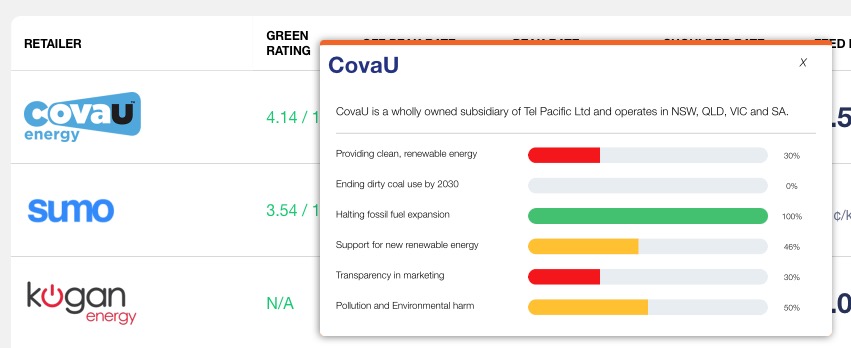
Example Use Cases:
- You’ve installed a 20kW solar power system. You might sort by feed-in tariff and work down the list until you find the best feed-in rate that allows such a large system. Simply Energy looks pretty good on the surface – but clicking through via the orange arrow shows you need a battery to be eligible.
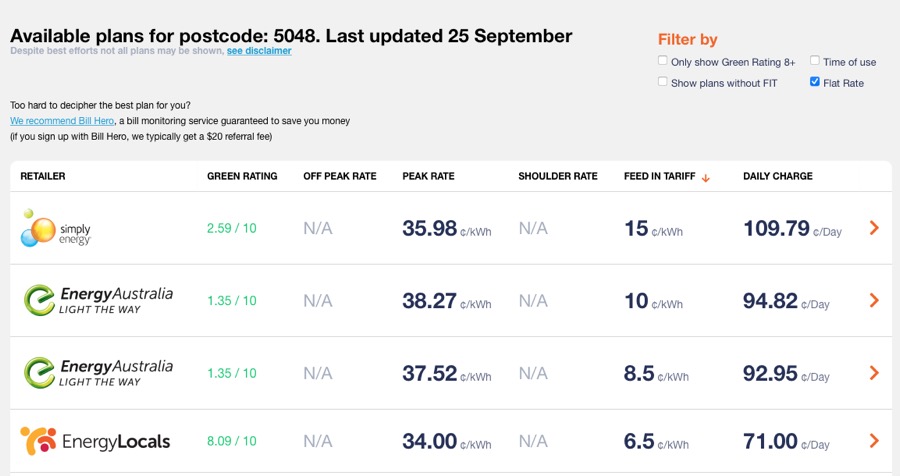
- You’ve installed solar and a battery system that will get you through the evening peak of a Time of Use tariff, but not the morning peak. You might look for a low overnight tariff that can recharge your battery for cheap. Then you can get through the morning peak on battery power. You don’t care about crazy-high peak rates because you’ll almost never draw from the grid at those times. Note: depending on your state and retailer, the off-peak rate may be during the day or during the night. Drill into the plan details to check the time periods.
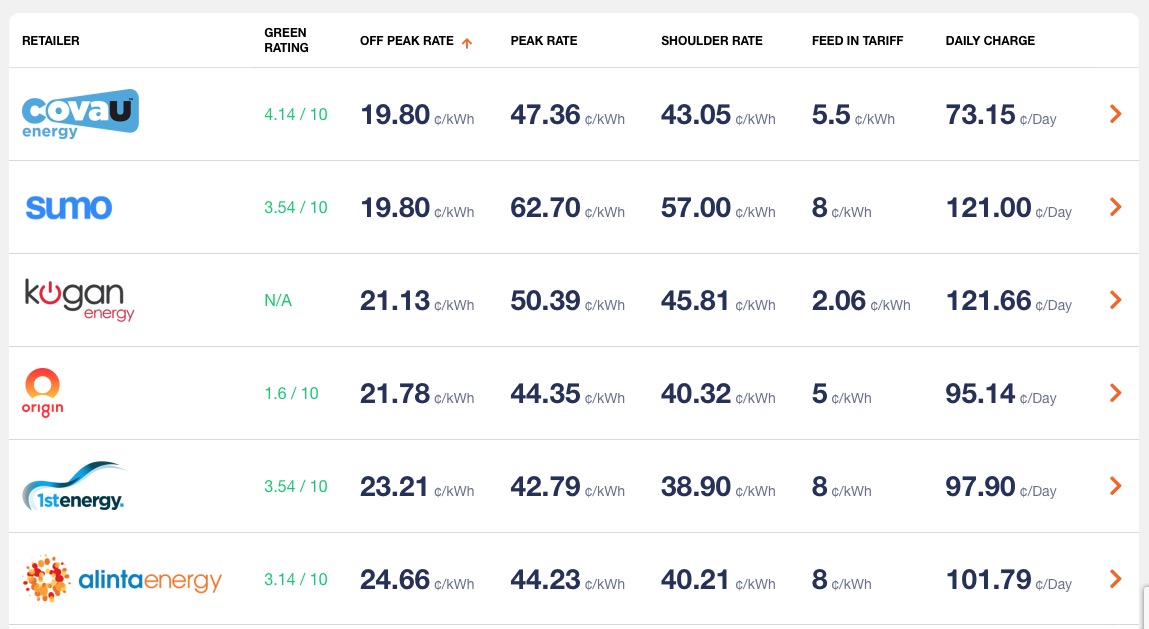
- You’ve bought an electric vehicle but can only recharge overnight. You might look for the lowest overnight rate.
- You’ve bought an EV you can recharge during the day. Your solar power system is not big enough to cover all of it. You might look for the cheapest daytime ‘solar sponge’ rate if that’s a thing in your state.
So, that’s the idea behind the tool. It demands no personal information, it is free to use and we have no commercial relationship with any electricity retailer – so there’s no benefit to us if you switch or not.
Give it a whirl and let me know in the comments how it can be improved and if it helped you find a better electricity plan for your clean energy lifestyle.
A note about Bill Hero: If all this seems too much, there is a great service called Bill Hero. It is a paid service where they continuously check whether you’d be better off on a different energy plan and then switch for you. If you sign up with them through the link in the tool, we get a referral fee and they guarantee you’ll save more than they charge you. Which is nice.
Footnotes
Original Source: https://www.solarquotes.com.au/blog/electricity-tariff-comparison/

